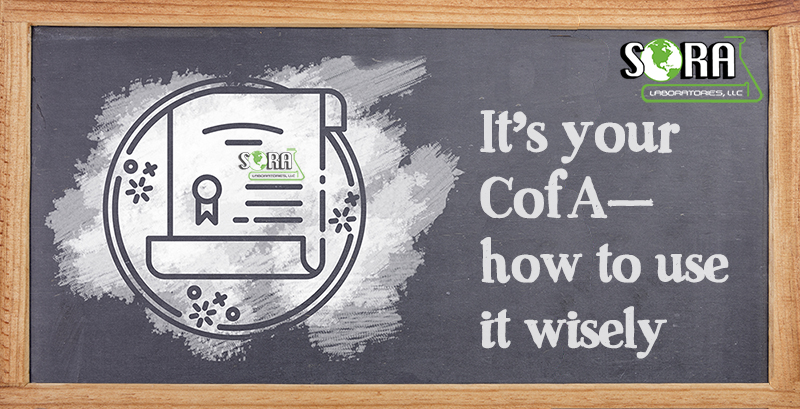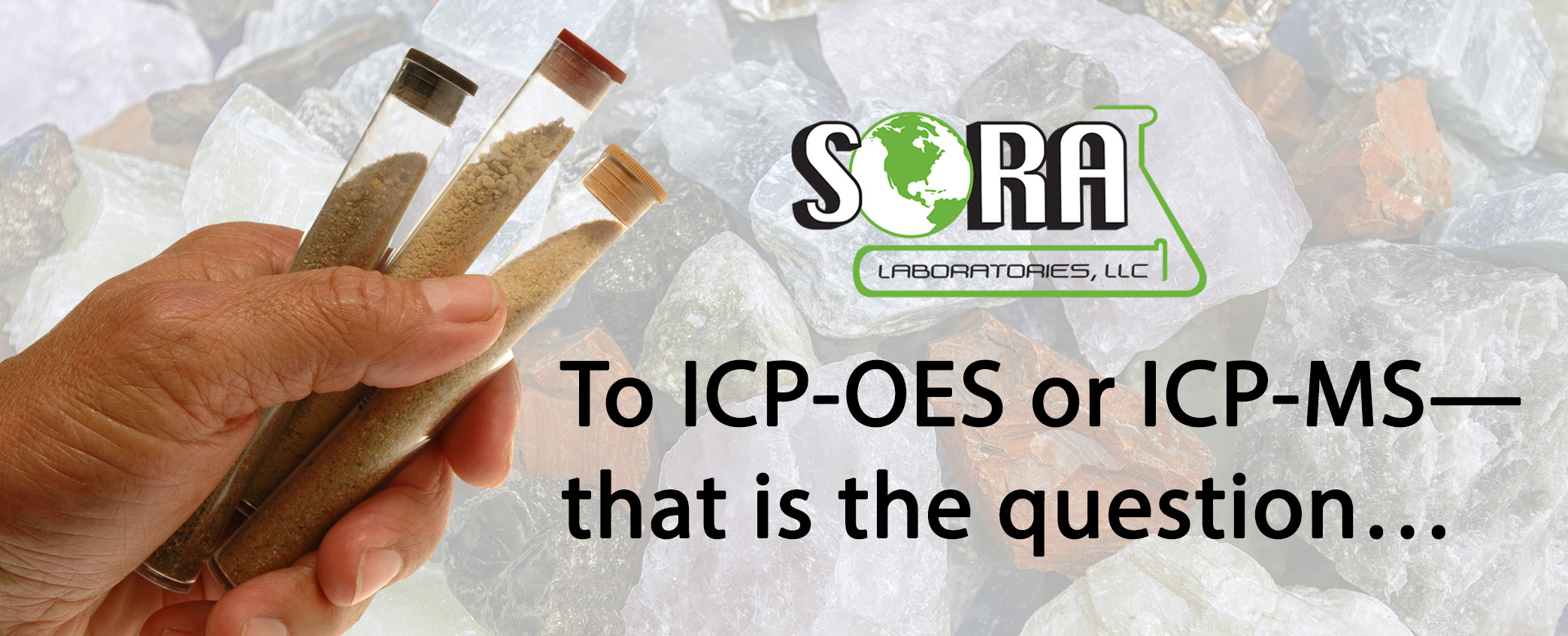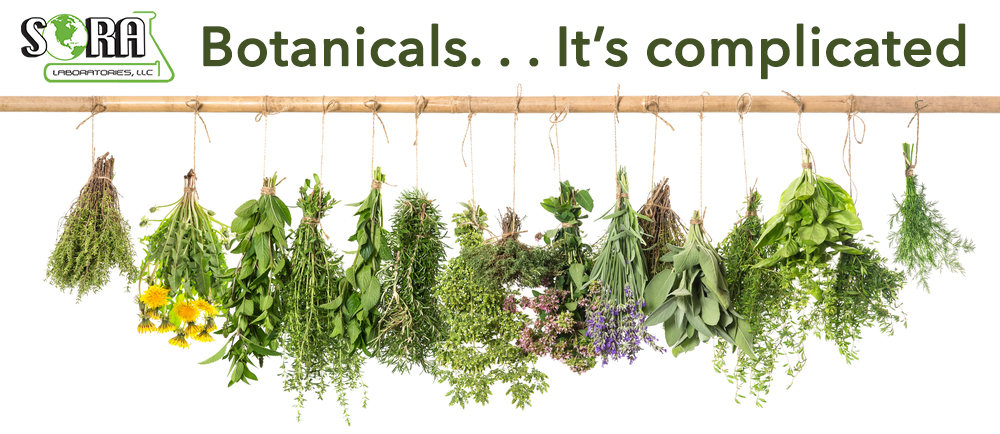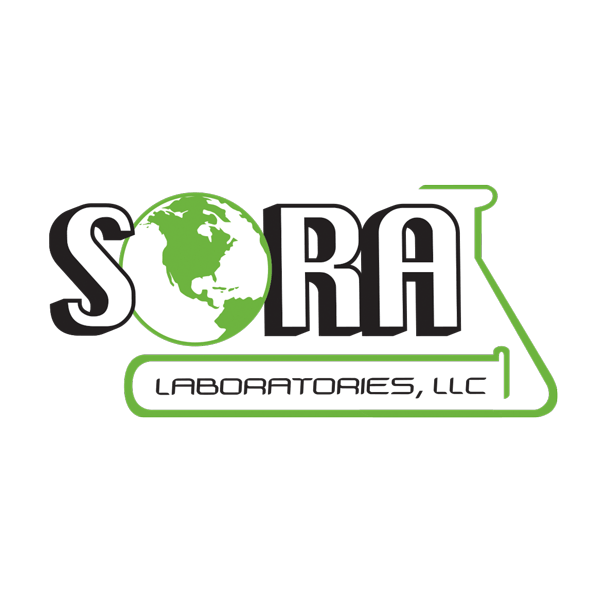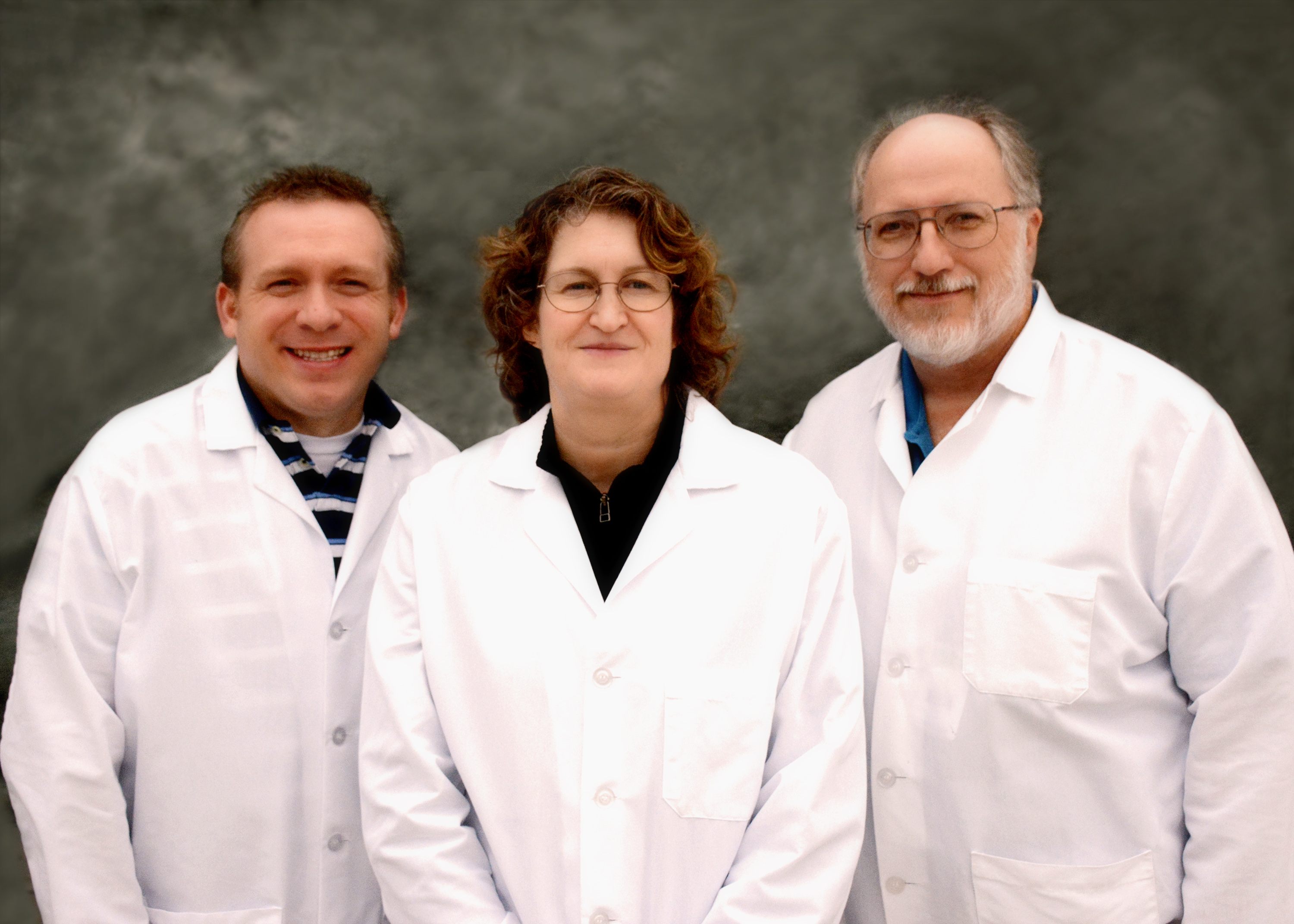Testing to ensure product and ingredient quality is a very important step in maintaining the integrity and efficacy of your brand. Because of FDA and regulatory pressures, verification testing is always top of mind. But testing also represents an investment in your product quality. Have you ever considered how you can use testing result data to drive sales and build your company’s brand?
A non-modified Certificate of Analysis (CofA) from SORA Labs can be used in its entirety on your website or within your marketing material without any additional permission from us—it’s your purchase to utilize for this purpose. If you do choose to modify the CofA or only use parts of it, we require a quick marketing agreement that allows us to approve the modifications. We believe that your product testing investment is a quality-minded attribute that should be advertised and used to promote your brand.
Some ways to get the most out of your CofA can include highlighting testing results that demonstrate the quality of your ingredients or products. If you show a CofA for aflatoxin, allergens, micro pathogens, or pesticide residue that are below the level of detection, this can instill customer confidence that your products are free from harmful substances and are safe to consume. Showing results for botanical identity or active ingredient potency also lets consumers know they are getting the quality of ingredients they see on the label and have come to expect. Additionally, tracking assays over time can be graphed/visually represented to show the ongoing shelf life and stability of your finished product.
SORA Labs wants to give you tools, such as solid testing data, to help you sell your products with confidence. Product testing can give you much needed data and fact-based information to help set your products apart from the rest. So, how can you use your CofA to create a more successful selling strategy? Use it to elevate your product quality in the minds of consumers and successfully build your brand!
Setting the pace—we make it easy to keep up
The supplement industry tends to create complex, multi-ingredient blends in a complicated matrix. Developing a standard product matrix and validating methods therein, can be a time-consuming, costly process. Although the standard capsule or tablet form is most common, stick pack blended powders, liquids, gummies, soft chews and even supplemented food products have made their way into the market successfully. But, have you ever thought about how standard methods were modified to accurately test these new products? As dietary supplement sales continue to increase year over year, they will often out-pace science and method development. SORA Labs has the expertise and resources to successfully develop a testing process to fit your new product matrix.
Since the standard testing methods are often designed for single ingredient raw materials or simple finished products, these blended products are often challenging to test accurately. Probiotics are a great example, as they are often included in complex, sugar and acidic flavored mixtures like gummies or soft chews. These samples can sometimes change the starting sample solution pH, and method development may be needed to determine if this pH variation will affect the method or if a pH adjustment needs to be considered before the testing begins. When a method is modified, validation steps need to be completed to ensure the method still performs as designed. Each step can be addressed and discussed to achieve the most accurate results for your matrix sample.
Enzyme blends in a sugar or soft chew type matrix, are another relevant example. When performing a standard enzyme activity method, the first step is placing the sample into the solution, dissolving a gummy, sugary mixture can become perplexing. Finding the best way to dissolve the matrix completely without destroying the enzyme itself, can also be a challenge. Since enzymes deactivate with heat, warming the solution is not a valid option. SORA Labs works with these sample types routinely, determining the optimum sample prep that allows the enzymes to act on the substrate and create the reaction needed to measure the activity, is key for a successful and accurate result. Experience with difficult assays and complex matrixes is one of our specialties, and SORA Labs is here to help with method development and probiotic and enzyme blend testing! Call us today to take the headache out of this complex testing process.
Making sure your organic ingredients are “actually” organic—a guide to testing
To be labeled organic, foods and botanicals must be certified as such by the USDA. Since there are strict standards in place for growing and processing these ingredients, many fertilizers, insecticides, herbicides and fungicides in conventional farming are prohibited in organic production. This even includes pre-treated fungicides on seeds.1 With so many restrictions in place for organic labeling, organic/non-toxic fungicides are being used, although sometimes proving ineffective in killing fungi. With this in mind, how can a manufacturer or brand mitigate their risk when purchasing and using ingredients that are labeled organic? The answer resides in testing.
Since organic/non-toxic fungicides are being used, it is imperative to ensure that these fungicides are actually effective in preventing mycotoxins formation. Mycotoxins are secondary metabolites produced by microfungi that are capable of causing disease and illness.2 Research shows that aflatoxin is the most common mycotoxin found in spices and herbs.3 Aflatoxins are produced from fungi that hasn’t been properly controlled. This leads to toxins being present in grains, nuts, herbs or other susceptible plants, calling for careful screening of aflatoxins when using botanical ingredients in products. Screening can be done with a general ELISA aflatoxin kit that measures total aflatoxin levels and gives an indication of toxins present in the material. There are also specific tests by HPLC or HPLC-MS technology which give exact levels of B1, B2, G1, G2 or other toxins. Most often, general screening is completed on incoming botanical materials to see if aflatoxin is present, and then follow-up testing is ordered to determine the specific levels of each toxin.
Since organic fertilizers can introduce harmful bacteria to the foods or botanicals being grown, monitoring the bacteria contamination with stringent microbiology testing, is necessary. Testing botanical ingredients for total plate count, coliform, Escherichia coli, yeast, mold and salmonella is a good place to start. These counts will give you valuable information about the cleanliness of the organic herbal when it arrives at your facility. Since microbiology contamination can happen anytime throughout the manufacturing process, additional microbiology testing needs to be completed before final release to the market.
Since the farming techniques for organics do not allow for commercial pesticides, run-off and contamination from other farms should be considered. And while there are many other tests to consider for organic ingredients, screening for pesticide residue is a good idea to ensure contamination has not happened.
Botanical ingredients introduce a level of complexity not previously experienced when using other ingredients in nutritional products and working with those labeled organic, poses additional challenges. Determining the needed testing can be complicated (Botanical Blog) but SORA Labs can help you determine the appropriate testing services needed for each ingredient. Don’t stress—let us help you with your testing needs today!
- Guide for Organic Crop Producers, pg. 7. ams.usda.gov/nop
- Bennett, J. W., and M. Klich. “Mycotoxins.” Clinical Microbiology Reviews3 (2003): 497–516. PMC. Web. 31 July 2017. https://www.ncbi.nlm.nih.gov/pmc/articles/PMC164220/
- The Scientific World Journal, Volume 2013 Article ID 874093.
http://dx.doi.org/10.1155/2013/874093
To ICP-OES or ICP-MS—that is the question…
Minerals are everywhere–they are in the soil, water, food and are even added to some supplements. Since minerals are essential to a properly functioning body, an imbalance in our mineral levels may cause health concerns. Supplements are often formulated to contain essential minerals and are cleverly designed to improve health by adding vital nutrients back into the diet. Minerals may also be used to improve the supplement product itself. For instance, adding a mineral to an enzyme blend as a co-factor, enhances the enzyme reaction and improves how the product functions once ingested.
To follow Good Manufacturing Practices (GMP’s), manufacturers and brand owners must prove the label claims for the listed ingredients. Testing is the absolute key to verifying an ingredient’s identity and potency. For mineral testing, laboratories often use Ion Coupled Plasma (ICP) equipment, of which two main ICP units are utilized: ICP-OES (Optical Emission Spectroscopy) and ICP-MS (Mass Spectroscopy).
This technology can be confusing for customers, especially when a laboratory utilizes both ICP-OES and ICP-MS testing. Here’s the skinny—the ICP-MS is designed for very low detection limits such as trace elements and unwanted contaminants in products like heavy metals (Arsenic, Cadmium, Mercury and Lead), while the ICP-OES is designed to test higher concentrations of minerals which are listed in microgram or milligram quantities on the label. ICP-MS is also the clear choice when trying to comply with Prop 65 regulations and calculating heavy metals for your recommended daily allowance, as it is necessary to detect low residual levels in parts per million for these calculations.
SORA Labs offers dual functionality for all your heavy metal and mineral testing, as we have both ICP-OES and ICP-MS equipment. In addition, we can take the guesswork out of choosing which testing is best suited for your products—this is our expertise! Our team can assist you with verifying label claims or determining heavy metal levels in your products. Call us for more information today!
Botanicals. . . It's complicated
Botanical ingredients are a popular component of many nutritional supplement products. Since they are harvested at various times of the year from different regions of the world, the exact vitamin, mineral and nutritional potencies may vary from batch to batch. These factors contribute to the complex nature of these products and the difficulties involved in setting specifications for testing. Not commonly known, is that once several botanicals are blended together, the identity of individual botanicals is no longer possible—think of scrambled eggs. For these blends, active ingredient chemical marker testing is effective. And, if the botanical has a chemical marker, that marker could potentially be used to quantify or even just ensure it is actually an ingredient in the blend.
When testing botanical-containing products, using validated reference standards and “scientifically valid methods” is important to ensure accurate results. Recent news coverage and discussion in the scientific community have raised questions on how to prove the identity of botanical material and which method to use. While there are many methods including microscopic, wet chemistry, thin-layer chromatography, HPLC identification techniques, FTIR/NIR, DNA barcoding and many others, each botanical will have unique testing and even a combination of testing methods to prove its identity. Since no single method can ID every botanical, DNA Barcoding, FTIR and other technologies should be viewed as just tools in a lab’s tool box, not an all-inclusive solution. They are useful and excellent resources, but may not be the single or best way to identify botanical material.
Since botanicals are grown outside in the soil, they actually absorb moisture and nutrients from the soil and some of what is absorbed may be harmful. The presence of heavy metals (heavy metal testing) continues to make news and regulations, such as proposition 65, continue to evolve. Testing for Prop 65 levels is more than just determining the parts per million (ppm) residual amounts of heavy metals found in a product. Instead, Prop 65 takes exposure levels or the daily dose being taken, into account when setting limits. Once these levels have been determined in the product, a calculation should be done to measure the full daily amount that will be taken. This final calculation is the total amount that is reviewed for the CA Prop 65 limits.
Another little-known test is PPSL irradiation screening. (PPSL testing) Irradiation uses ionizing radiation to treat food ingredients for several reasons such as lowering microbial counts or destroying harmful microorganisms the botanicals have been exposed to in the environment. “The FDA has evaluated the safety of irradiated food for more than 30 years and has found the process to be safe. The World Health Organization (WHO), the Centers for Disease Control and Prevention (CDC) and the U.S. Department of Agriculture (USDA) have also endorsed the safety of irradiated food.”1 Even though the irradiation process is generally considered safe, there are certain labeling laws that must be followed. If an ingredient has been irradiated, a specific seal (see below) must be included on the product’s packaging. SORA Labs has identified irradiation among a variety of popular botanical ingredients including: Barberry Root Bark, Barley Juice, Broccoli Powder, Cordyceps Ext., Cumin, Eyebright Powder Ext., Garlic, Gotu Kola Powder and Marshmallow Root Powder. Although these represent some common occurrences, screening for all botanicals is recommended to ensure they are free from irradiation and are not mislabeled according to FDA regulations.
Other testing methods for botanicals include microbiology (rapid micro testing), pesticide residue (pesticide screen), residual solvent residue (residual solvents testing) and more. With so many factors to consider when testing botanicals, it is imperative to choose a testing lab that can help you navigate the complexities with ease. Contact us today for a quote on your ingredient testing!

References-
Trusted testing services—the team approach
For ingredient suppliers, contract manufacturers and brand owners, partnership with a testing lab is often a necessary component. Even with an in-house lab, a company may not be able to perform every test required for their products due to the extensive nature of various testing practices and methods. When complicated, cost prohibitive, or specialty methods are required, partnership with an experienced testing lab, makes perfect sense—enter specialty 3rd party testing labs like SORA Labs.
The FDA Code of Federal Regulations requires that a vendor be qualified, and just like any other vendor, labs should be questioned about the expertise of methods they run. Reviewing proficiency testing; requesting staff qualification and reviewing standard operating procedures (SOP), can provide valuable insight when evaluating a lab. Ultimately, an on-site audit is the best strategy when making a final determination of a lab’s worthiness. Another qualifier when choosing a lab is the ISO 17025:2005 accreditation from the International Organization of Standardization. This signifies that the lab has met stringent criteria and passed audits to be considered a high quality international testing lab.
A lab partnership should also include a Quality Agreement (QA), which defines responsibilities, methods, out-of-specification communication and more. As regulations are increasing, the industry continues to see more findings regarding quality control procedures. An in-place agreement will ensure the quality process has been defined for outsourced testing, and both companies understand each other’s roles and expectations. If a Quality Agreement has not yet been established, you can find our QA form here (Quality Agreement Form Request). Since ISO already requires the highest level of confidentiality, a Non-Disclosure Agreement (NDA) is less important than the Quality Agreement; however some companies choose to have both agreements in place.
Although you may not need outside testing services on a daily basis, it’s a smart idea to have a qualified and experienced lab in your corner when the need arises. Sometimes, it can take a team to get your project completed and partnering with a high-quality testing lab like SORA Labs, is a great place to start. Let us help you today!
The Many Faces of Probiotic Testing—SORA Can Help You Keep it Simple
Probiotic testing for potency to determine colony forming units (cfu/g ) is a complex process. This month’s video features the steps involved in testing the high count bacteria in probiotics. This video begins with a sample that is ready to plate. The preliminary stages in the sample preparation allow the freeze-dried bacteria to be re-hydrated and the spore forming bacteria to be heat-shocked for optimal growth on the agar plate. It’s important to know that each strain being requested to test for cfu/g count has specific method preparation instructions that are followed before the sample is ready for plating. Sample Request Form.
If the probiotics to be tested are single-strain, raw materials, then the ingredient vendor should be able to supply the correct test method. If the sample is a blend of strains or is a combination of several manufacturers’ materials, then choosing the method can be more complicated, but not impossible. An experienced lab will work to select a single method that allows several stains to grow out on the same media, although blended probiotics may take longer to complete due to the extra testing needed to determine the ideal method. Once the method has been determined, and testing is complete, the results of total cfu/g count can be used to substantiate the product label claims.
After determining the most appropriate method, calculating the dilutions to plate is the next step. If the product specification is 10 billion cfu/g, then the 108 and 109 serial dilutions would be plated to incubate. Ideally, it’s best to choose the dilutions that will allow for counting 25-250 colonies per plate when calculating results. Plating is performed in triplicate to show repeatability and ensure consistent growth of the sample. If no growth is seen on these plates, then it would need to be re-plated or be reported at <100 million cfu/g. If re-plating is necessary, then the process is started over and the next two, or more, serial dilutions are plated. The method generally lists the incubation time, but most probiotics incubate for 72 hours. It is evident that sub-potent products or material without proper specifications often take longer and are costlier to test.
Choosing the correct test method and having accurate specifications is the key to having successful potency determinations for probiotic products. Specialty testing requires an experienced lab; with SORA Labs you can be confident that the results we provide your company have the best interest of delivering efficacious products in to the marketplace for you to be proud of.
Why we soar above the rest!
Don’t use an imitation—use the original. Experience counts!
Our lab qualifications:
We are one of the only labs with enzyme assays on our ISO 17025:2005 Scope of Accreditation. This means we:
- Have a stringent proficiency testing program in place. We want to ensure that our testing is accurate, reliable and repeatable.
- Use Reference or Check Standards with each method we run. The test results must be within a certain RSD% for the run to be reported. Not all testing labs use standards. See our blog for additional information on what mistakes your testing lab may be making.
- Have been chosen as a testing lab for the U.S. Pharmacopeia to verify some of the reference standards that they sell. Our reputation and quality testing are used by the top of the industry.
- Run enzyme assays every day, as this is a large volume of our business. With 25+ years of experience , these USP enzyme methods are long and tedious and have been perfected over time. Unlike HPLC methods that can easily be adapted to any lab, these are more complicated wet chemistry reactions to measure the activity of the enzyme, not just the amount used in the product. Read more here.
- Focus on customer service and partnership with your company. We want to be here for the long term, not just one sample. We gladly communicate about the results or answer any questions that you have about your
- Have annual ISO external audits and also conduct annual ISO internal audits. We strive for continual improvement and perform preventive and corrective actions.
Top Quality Testing=Top Quality Products
SORA Labs expands Quality Control team
Forsyth, MO—SORA Labs recently welcomed Quality Supervisor, David Gauwitz to their accomplished QC team. David brings nearly 35 years of proven, award-winning experience to further enhance the level of excellence that SORA is known for. As Quality Supervisor, David will be working on the continual improvement of ISO process management while supporting the lab to meet the highest quality standards.
Leading the quality team is Lab/Quality Manager, Bob Williams and Technical Manager, Ramona Clemens. Ensuring accurate results takes continual verification of generated data. As the lab continues to grow, calibrations and data testing, along with “Out of Specification” investigations and analysis, become a larger undertaking to maintain the same high quality standards. David will further enhance SORA’s ability to meet customer deadlines, along with ensuring every piece of the quality control process fits together.
Known for its consistently accurate and precise results, SORA Labs has a quality system in place that will withstand even the toughest scrutiny. SORA Laboratories is registered with two different internationally recognized ISO standards: an ISO 9001:2008 certification and ISO 17025:2005 accreditation. These standards represent quality, accurate testing, designed to give customers peace of mind.
###
For over 20 years, SORA Labs has been specializing in enzyme assays, probiotic testing, nutraceutical and agricultural testing methodology, along with being the foremost expert in testing for quality and potency in natural ingredients, raw materials and finished products. SORA Labs has dedicated itself to perfecting methodologies, performing analytical tests and developing procedures to be a one-of-a-kind testing facility. For more information, visit soralabs.com.
Taking the Mystery out of Enzyme Blends
Enzyme blends are complicated to understand, but appropriate testing can help solve the mystery that is often associated with these. There are several recommended tests for enzyme products that are identified by Good Manufacturing Practices (GMPs). These include: identity, potency, contamination and/or adulteration
It is possible to identify enzymes in a blend with mini-assays for many of the common enzymes on the market. These ID tests are not FTIR fingerprint tests, but instead show that the enzyme is still working and has not been deactivated by heat or humidity. If the enzyme in the blend does not have this wet chemistry identity test available, then the full potency assay could be completed with the ID listed as “positive per assay.”
For enzyme potency claims, most manufacturers measure enzyme activity units, “by input.” This is applicable because enzymes have interactions that are unique to each blend. When trying to follow GMP’s and FDA regulations, it’s important to test your finished products to meet all label claims. Testing of the blend is possible, but your results may differ from the “input” activities on the label because by definition, enzymes are proteins that act as catalyst for biochemical reactions. Testing the blends is the only way to fully understand these interactions. Some of the common interactions can be read here.
Since contamination can come from several sources, it is recommended to test enzyme products for common culprits such as heavy metal or microbial contamination. Heavy metal contamination could be introduced with tainted water that is used in the fermentation process or with carriers used in the drying process. Microbial contamination may come from improper handling, dirty equipment or other surfaces that have not been cleaned properly that the material touches.
Product adulteration, often the result of supplier mistakes or dishonest practices, may be difficult to identify. Research should be done to determine if there are any known adulterants for that specific material. While it’s impossible to test for every adulterant known for each ingredient, we can certainly test for specific ones that have been found to be an issue in the past. One known adulterant affecting the enzyme market is chloramphenicol. Chloramphenicol is an antibiotic that was used overseas to clean equipment or control microbial growth and consequently became a residue in finished material. With chloramphenicol being a known issue, material screening can effectively identify the presence of chloramphenicol residue. SORA Labs developed an in-house validated chloramphenicol testing method based on the FDA LIB4306. This in-house method specifically detects chloramphenicol in the enzyme matrix using the HPLC MS/MS. A proud accomplishment, SORA was recognized at the NA Residue Conference for outstanding development. More information on chloramphenicol testing can be found here.
Enzyme blends are complex, but choosing the right testing lab will go a long way in demystifying what testing is needed to ensure your products are safe and of the highest quality. SORA Labs has the enzyme expertise with this matrix and many other enzyme activity methods on their ISO 17025:2005 scope of accreditation. Let SORA Labs solve your enzyme testing mystery today!

